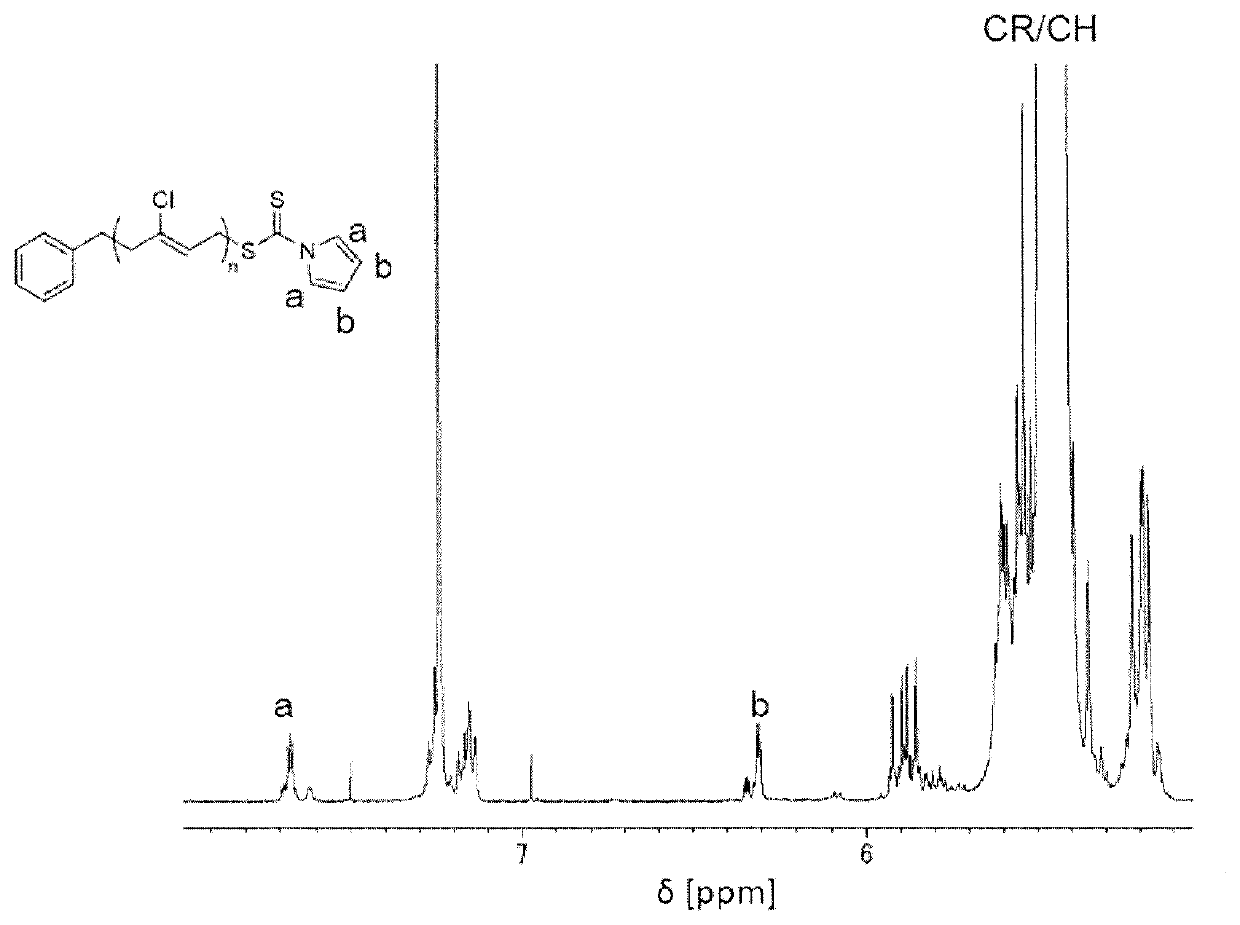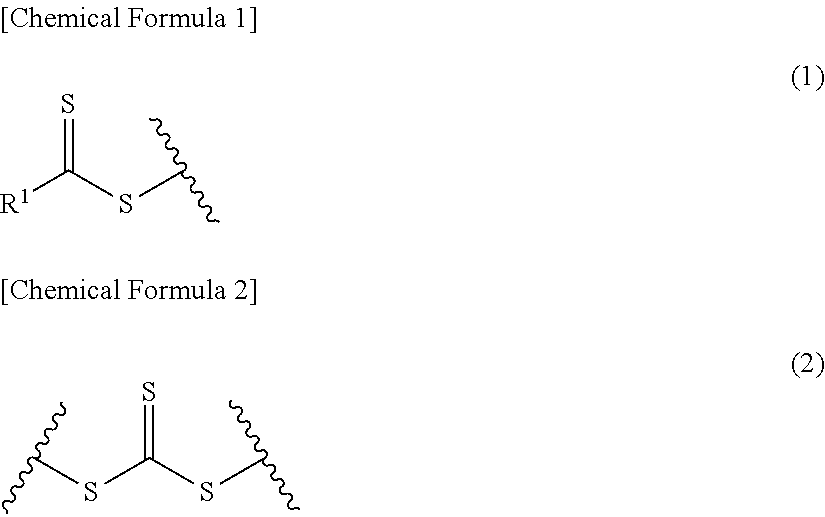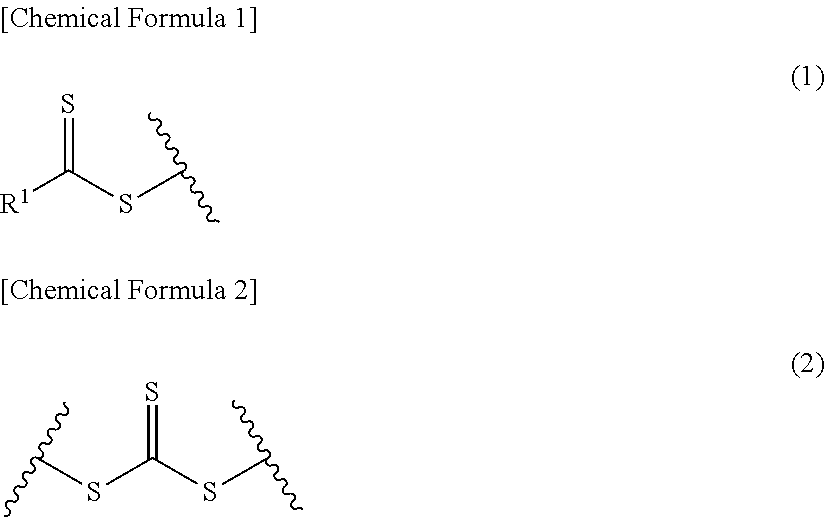Chloroprene polymer and production method therefor
a chloroprene polymer and polymer technology, applied in the field of chloroprenebased polymer, can solve the problems of affecting the physical properties of rubber, and achieve the effects of excellent layer separation resistance, excellent durability and fatigue endurance, and sufficient molecular weigh
- Summary
- Abstract
- Description
- Claims
- Application Information
AI Technical Summary
Benefits of technology
Problems solved by technology
Method used
Image
Examples
example 1
[0107]To a polymerization can of an inner volume of 10 liters, 480 g of a chloroprene monomer, 5.2 g of benzyl 1-pyrrolecarbodithioate (trivial name: benzyl pyrroledithiocarbamate), 4000 g of pure water, 160 g of disproportionated potassium rosinate (manufactured by Harima Chemicals Group, Inc.), 9.2 g of sodium hydroxide, and 20 g of a sodium salt of a condensation product of β-naphthalenesulfonic acid and formalin (trade name: DEMOL N: manufactured by Kao Corporation) were added. 0.60 g of potassium peroxide was added as a polymerization initiator, and polymerization was performed at a polymerization temperature of 35° C. under a nitrogen gas flow. 3520 g of a chloroprene monomer was additionally added over 2 hours when the polymerization ratio of the initial monomer reached 30%, and diethylhydroxyamine (0.02 parts by mass with respect to 100 parts by mass of the chloroprene monomer used) was added as a polymerization terminator to terminate the polymerization when the final polym...
example 2
[0112]A chloroprene rubber of Example 2 was obtained in the same manner as in Example 1 except that benzyl 1-pyrrolecarbodithioate (trivial name: benzyl pyrroledithiocarbamate) of Example 1 was changed to 5.0 g and potassium persulfate was changed to 0.58 g.
example 3
[0113]A chloroprene rubber of Example 3 was obtained in the same manner as in Example 1 except that benzyl 1-pyrrolecarbodithioate (trivial name: benzyl pyrroledithiocarbamate) of Example 1 was changed to 3.2 g, potassium persulfate was changed to 0.37 g, and the final polymerization ratio was set to 80%.
PUM
| Property | Measurement | Unit |
|---|---|---|
| half-life temperature | aaaaa | aaaaa |
| temperature | aaaaa | aaaaa |
| temperature | aaaaa | aaaaa |
Abstract
Description
Claims
Application Information
 Login to View More
Login to View More - R&D
- Intellectual Property
- Life Sciences
- Materials
- Tech Scout
- Unparalleled Data Quality
- Higher Quality Content
- 60% Fewer Hallucinations
Browse by: Latest US Patents, China's latest patents, Technical Efficacy Thesaurus, Application Domain, Technology Topic, Popular Technical Reports.
© 2025 PatSnap. All rights reserved.Legal|Privacy policy|Modern Slavery Act Transparency Statement|Sitemap|About US| Contact US: help@patsnap.com



